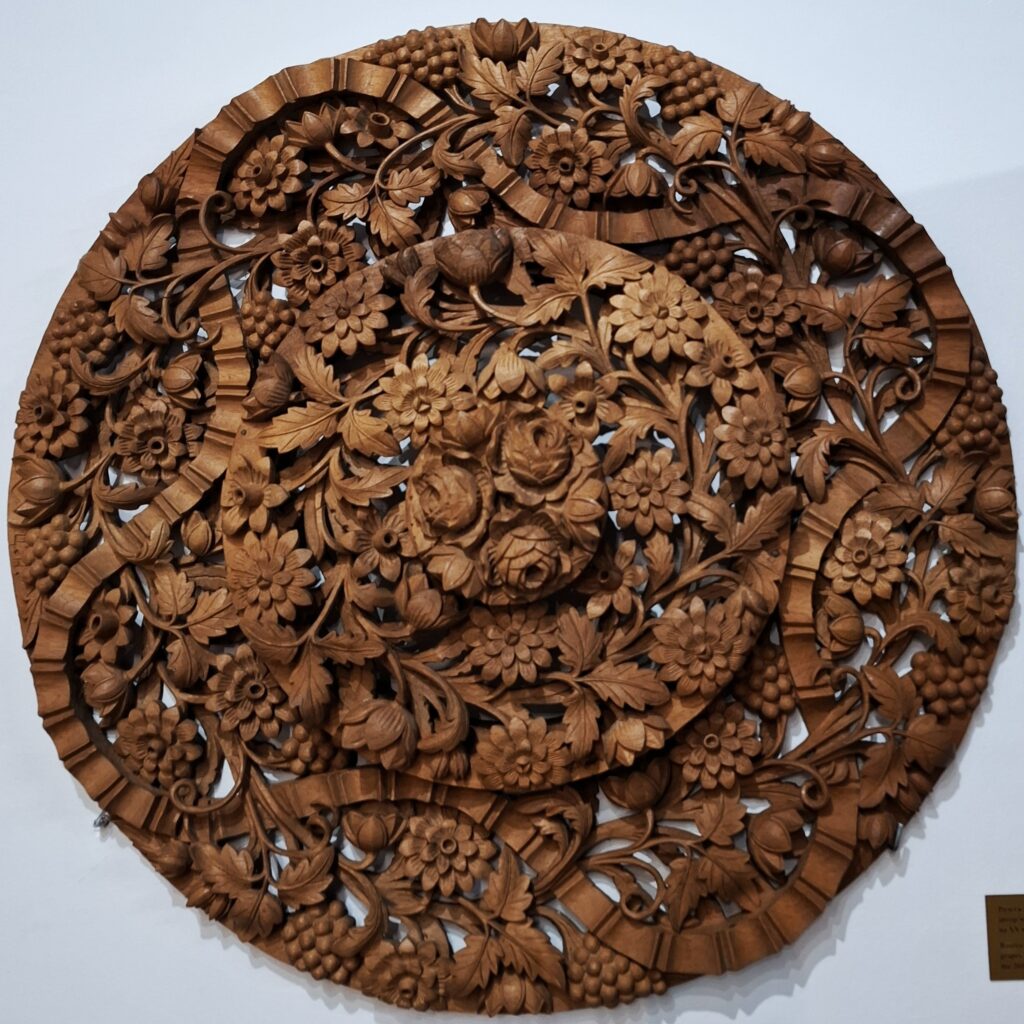-History-
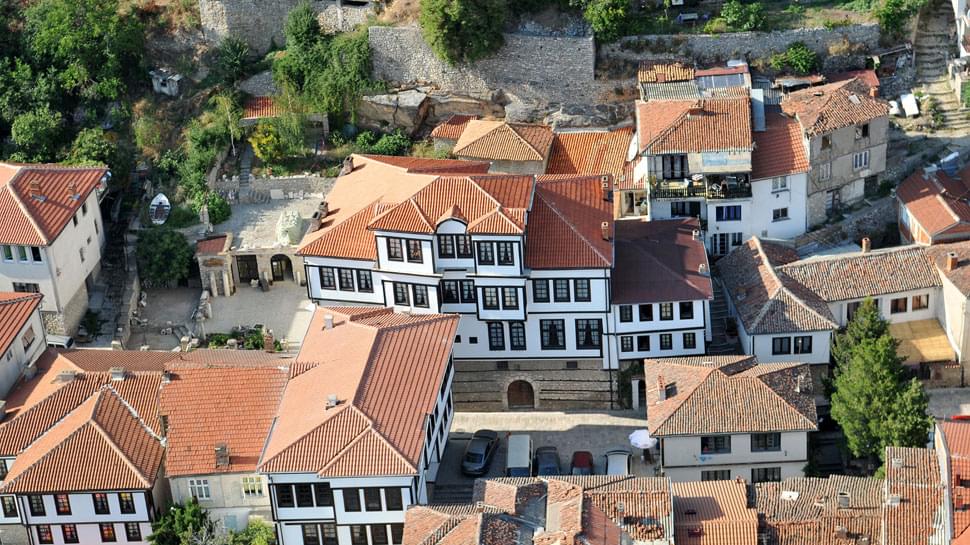
-Beginning-
On the site of the current Robevci house in Ohrid, there was another house, owned by Jaki Pendo from the Gerakomija neighborhood, who died in 1825, when it was bought by the brothers Angele and Anastas Robevi. They demolished it to the ground and built a new house in 1827. Behind the new house, on the north side, they erected a stone warehouse, above which were made barns for living. The construction of the two-story house, with a ground floor, was completed on April 15, 1827. The Robevci family lived in it for 35 years, until January 1861, when it was burned down by the famous criminal from Ohrid and the Ohrid region, Ustref Bey.
Two years after the fire, from 1861 to 1863, the current Robevci house was rebuilt, the left half for Konstantin Robev, and the right half for Anastas (Tase) Robev.
The main builder was Todor Petkov (1814-1899) from the village of Gari, Western Macedonia, from the Ognenovci family, a famous Macedonian carver and builder from the mid-19th century. His father Petko was a famous carver who worked together with Petre Filipovski-Garkata, from whom he learned the craft of carving.
Under the leadership of Todor Petkov, the interior of the Robevci house was also made: the carved ceilings, the closets and other decorative elements. However, in order to distinguish the carvings, other master carvers from Debar were called in for the part of the house that belonged to Angele. During the work on the two halves of the building, the teams of carvers were forbidden to see each other, which is why the left half of the house, where Konstantin lived, is different from the other half where other masters worked.
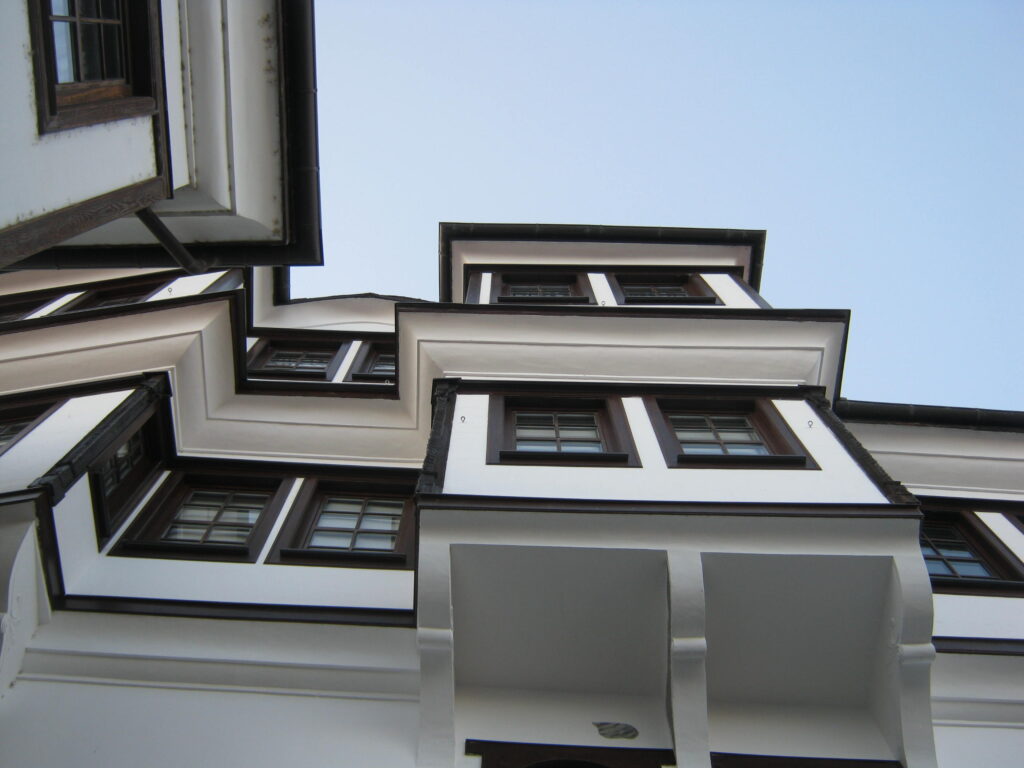
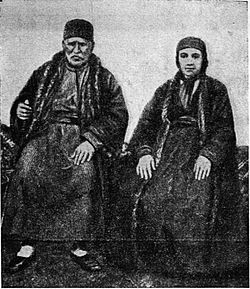
Anastas Robev and his wife, mid-19th century.
-Robevci Family-
The Robevci are a wealthy Ohrid family, which according to some researchers has been mentioned since 1379 on a tombstone inscription in the church of "St. Mary Perivlepta". However, they are better known from the time of Stefan Robev, who is the founder of the trading company with which he acquired that great wealth. Towards the end of the 18th and the beginning of the 19th century, he founded a trading company, which was expanded by his sons Anastas (in some sources he is mentioned as Atanas) and his brother Angele, and their sons. The company is mainly engaged in the production and sale of leather and furs.
From what is known about the family, it is known that they are not only known as merchants, but also for the fact that they produced a large number of intellectuals and highly educated people. Angele's eldest son, Konstantin, is the first doctor of medical sciences in the Ohrid-Bitola region. He received his doctorate in Vienna in 1841, and his brother Eftim (who died very young and left no descendants), received his doctorate in Leipzig, Germany, where he was also an assistant for a certain period. This family produced a large number of intellectuals in the 19th century, in conditions when Macedonia was part of the Ottoman Empire. This is a matter of respect, in addition to money, they also possessed intellect. A large number of their descendants are doctors of medicine or other sciences. Anastas's son, Dimitar, is the first member of Parliament in the Ottoman parliament in the 70s of the 19th century, a representative of Macedonia from these regions. He was known as a great lobbyist for an independent Macedonia, but unfortunately his lobbying efforts did not bear fruit during that period.
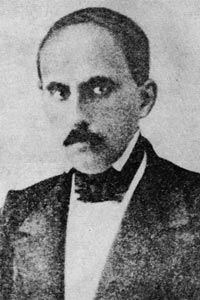
Konstantin Angelov Robev
-National Museum of Ohrid-
In June 1950, it housed the National Museum in Ohrid, and in 1951 it was placed under the protection of the Law on Cultural and Historical Monuments. The building was nationalized in 1953, and in 1959 it was handed over to the National Museum-Ohrid for permanent use. With the integration of the National Museum and the Institute for the Protection of Cultural Monuments on March 1, 1973, the National Museum as an independent organization ceased to exist in its previous form. Then the reconstruction of the Robevci house began, which lasted with interruptions until August 25, 1990, when it was reopened as a museum with a memorial floor for the Robevci family, with a presentation of the archaeological wealth of the Ohrid-Struga region and with a presentation of the Ohrid carvings in the long enclosed veranda of the house, which was given the function of the Ohrid residence.
In 1996, the Robevci house was again placed under the protection of the Law on the Protection of Cultural Monuments of the Republic of Macedonia as a valuable cultural and historical architectural heritage with recognizable characteristics of the old town of Ohrid architecture from the 19th century.
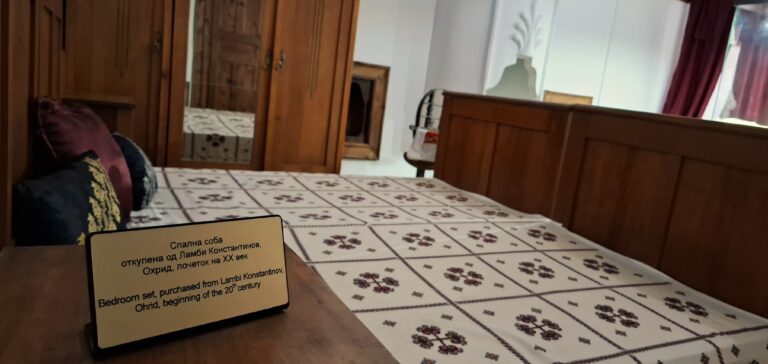
The house is a protected cultural monument and consists of three floors, plus the top floor, the so-called "shirvan". In the lower part, epigraphic monuments from Ohrid and the surrounding area are exhibited, as well as valuable exhibits: "Miljokaz" (found on the Via Egnatia road), the two torsos of the goddess Isis, etc. Archaeological exhibits dating from prehistoric times to the medieval period are also exhibited on the second and third floors.
Throughout the house and its vicinity, there are examples of objects made in the "Ohrid carving" style, works by famous masters from the city and the surrounding area. In the eastern part of the floor, you can also see the ethnological exhibition of household items of the Robevci family (coffins, genealogy, a preserved fresco by Dicho Zograf from 1862, Konstantin Robev's medical bag, etc.).
-Ohrid carving-
In the exhibition hall of the House of Robevci in Ohrid, rare examples of contemporary Ohrid carving are exhibited before the Macedonian and foreign public. Carving is a craft with a long tradition in Ohrid. There was a carving school here for decades, and after its closure, young people trained in the EMO Atelier in Ohrid. The carvings made by Ohrid masters are exceptionally valuable works of art, which are highly appreciated not only in Macedonia, but also beyond. Their works adorn a large number of spiritual temples, as well as institutions.
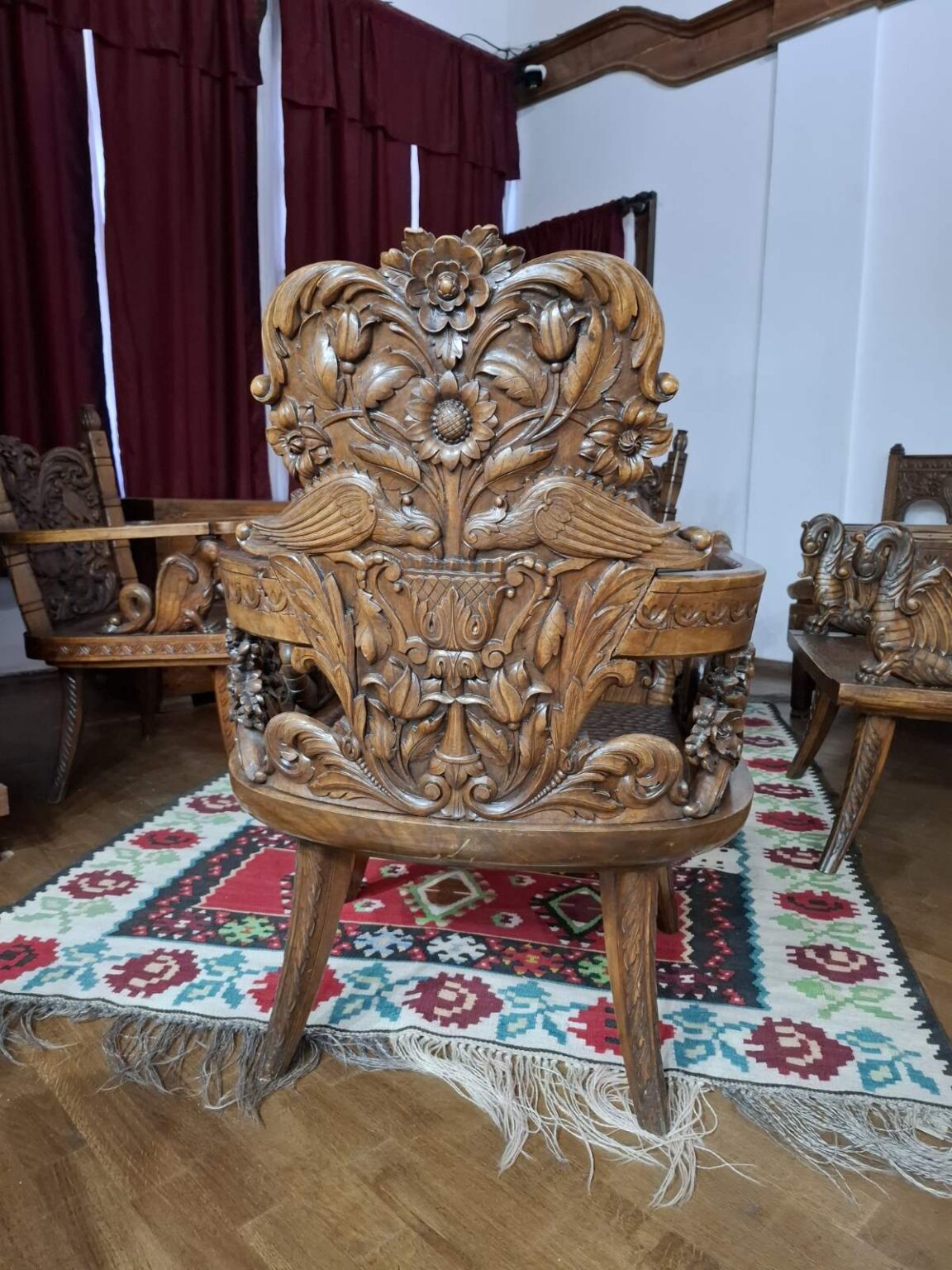
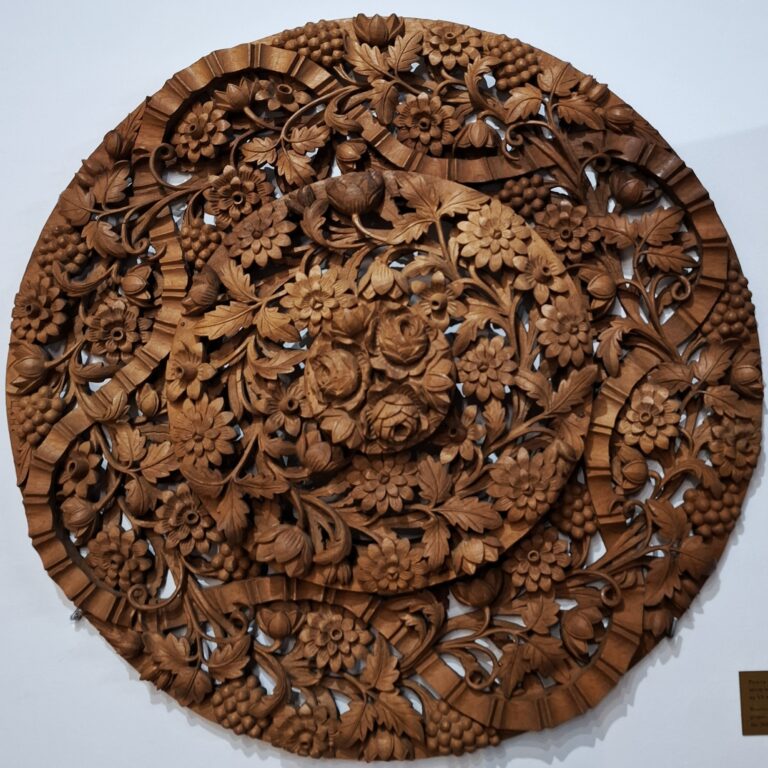
Rosette, deep and openwork carving with flowers and birds, author master carver Cvetan Nikolovski, second half of the 20th century.
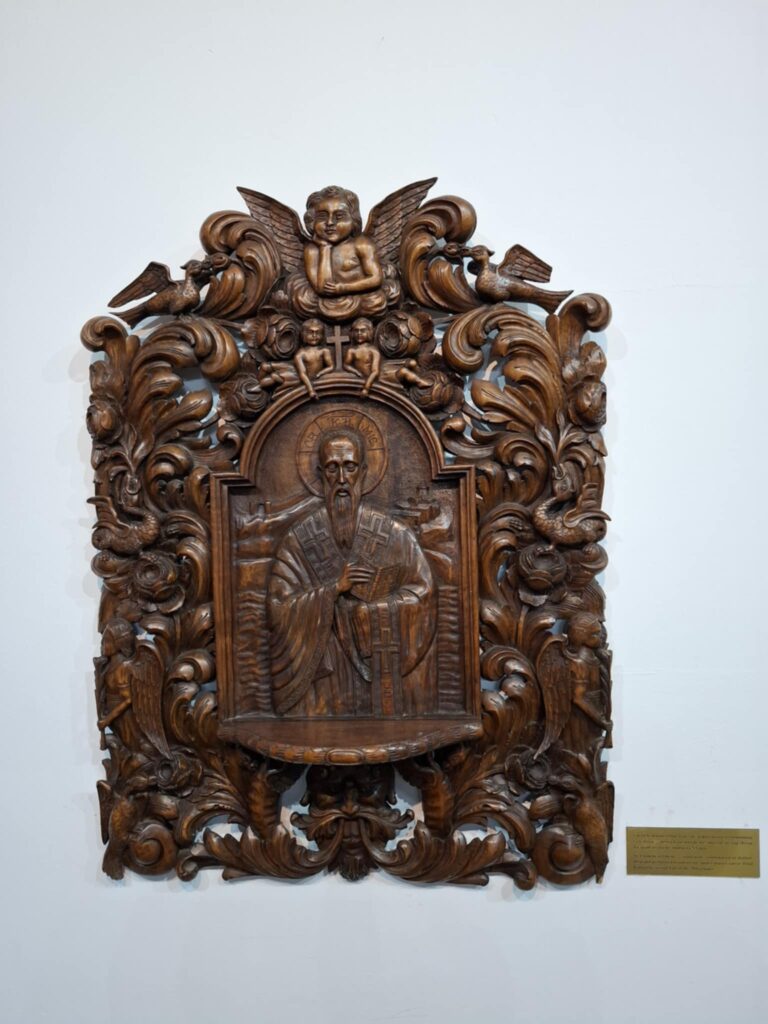
Saint Clement of Ohrid, relief icon, master carver Petar Kalajdzi, second half of the 20th century.

Four Seasons, master carver Petar Kalajdzi, second half of the 20th century.
-History-

-Beginning-
On the site of the current Robevci house in Ohrid, there was another house, owned by Jaki Pendo from the Gerakomija neighborhood, who died in 1825, when it was bought by the brothers Angele and Anastas Robevi. They demolished it to the ground and built a new house in 1827. Behind the new house, on the north side, they erected a stone warehouse, above which were made barns for living. The construction of the two-story house, with a ground floor, was completed on April 15, 1827. The Robevci family lived in it for 35 years, until January 1861, when it was burned down by the famous criminal from Ohrid and the Ohrid region, Ustref Bey.
Two years after the fire, from 1861 to 1863, the current Robevci house was rebuilt, the left half for Konstantin Robev, and the right half for Anastas (Tase) Robev.

The main builder was Todor Petkov (1814-1899) from the village of Gari, Western Macedonia, from the Ognenovci family, a famous Macedonian carver and builder from the mid-19th century. His father Petko was a famous carver who worked together with Petre Filipovski-Garkata, from whom he learned the craft of carving.
Under the leadership of Todor Petkov, the interior of the Robevci house was also made: the carved ceilings, the closets and other decorative elements. However, in order to distinguish the carvings, other master carvers from Debar were called in for the part of the house that belonged to Angele. During the work on the two halves of the building, the teams of carvers were forbidden to see each other, which is why the left half of the house, where Konstantin lived, is different from the other half where other masters worked.
-Robevci Family-

The Robevci are a wealthy Ohrid family, which according to some researchers has been mentioned since 1379 on a tombstone inscription in the church of "St. Mary Perivlepta". However, they are better known from the time of Stefan Robev, who is the founder of the trading company with which he acquired that great wealth. Towards the end of the 18th and the beginning of the 19th century, he founded a trading company, which was expanded by his sons Anastas (in some sources he is mentioned as Atanas) and his brother Angele, and their sons. The company is mainly engaged in the production and sale of leather and furs.

From what is known about the family, it is known that they are not only known as merchants, but also for the fact that they produced a large number of intellectuals and highly educated people. Angele's eldest son, Konstantin, is the first doctor of medical sciences in the Ohrid-Bitola region. He received his doctorate in Vienna in 1841, and his brother Eftim (who died very young and left no descendants), received his doctorate in Leipzig, Germany, where he was also an assistant for a certain period. This family produced a large number of intellectuals in the 19th century, in conditions when Macedonia was part of the Ottoman Empire. This is a matter of respect, in addition to money, they also possessed intellect. A large number of their descendants are doctors of medicine or other sciences. Anastas's son, Dimitar, is the first member of Parliament in the Ottoman parliament in the 70s of the 19th century, a representative of Macedonia from these regions. He was known as a great lobbyist for an independent Macedonia, but unfortunately his lobbying efforts did not bear fruit during that period.
-National Museum of Ohrid-
In June 1950, it housed the National Museum in Ohrid, and in 1951 it was placed under the protection of the Law on Cultural and Historical Monuments. The building was nationalized in 1953, and in 1959 it was handed over to the National Museum-Ohrid for permanent use. With the integration of the National Museum and the Institute for the Protection of Cultural Monuments on March 1, 1973, the National Museum as an independent organization ceased to exist in its previous form. Then the reconstruction of the Robevci house began, which lasted with interruptions until August 25, 1990, when it was reopened as a museum with a memorial floor for the Robevci family, with a presentation of the archaeological wealth of the Ohrid-Struga region and with a presentation of the Ohrid carvings in the long enclosed veranda of the house, which was given the function of the Ohrid residence.
In 1996, the Robevci house was again placed under the protection of the Law on the Protection of Cultural Monuments of the Republic of Macedonia as a valuable cultural and historical architectural heritage with recognizable characteristics of the old town of Ohrid architecture from the 19th century.
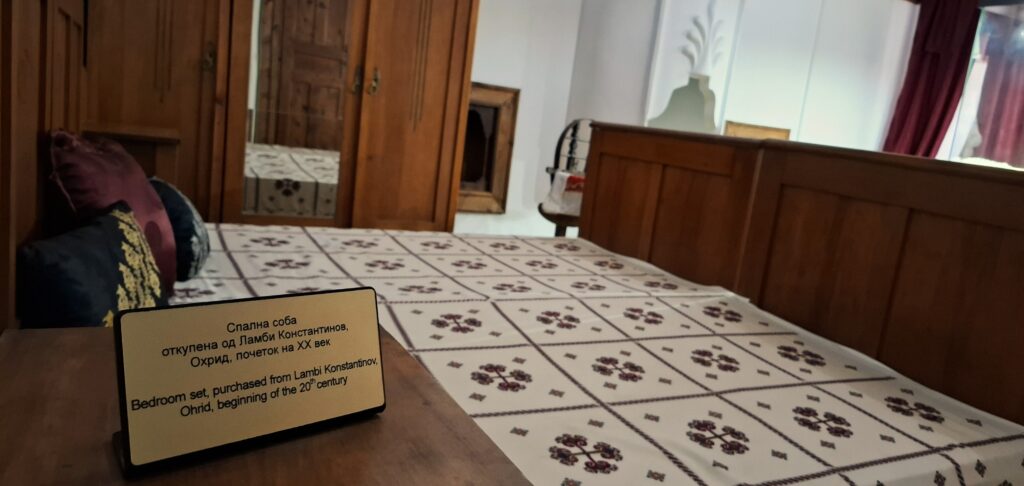
The house is a protected cultural monument and consists of three floors, plus the top floor, the so-called "shirvan". In the lower part, epigraphic monuments from Ohrid and the surrounding area are exhibited, as well as valuable exhibits: "Miljokaz" (found on the Via Egnatia road), the two torsos of the goddess Isis, etc. Archaeological exhibits dating from prehistoric times to the medieval period are also exhibited on the second and third floors.
Throughout the house and its vicinity, there are examples of objects made in the "Ohrid carving" style, works by famous masters from the city and the surrounding area. In the eastern part of the floor, you can also see the ethnological exhibition of household items of the Robevci family (coffins, genealogy, a preserved fresco by Dicho Zograf from 1862, Konstantin Robev's medical bag, etc.).
-Ohrid carving-

In the exhibition hall of the House of Robevci in Ohrid, rare examples of contemporary Ohrid carving are exhibited before the Macedonian and foreign public. Carving is a craft with a long tradition in Ohrid. There was a carving school here for decades, and after its closure, young people trained in the EMO Atelier in Ohrid. The carvings made by Ohrid masters are exceptionally valuable works of art, which are highly appreciated not only in Macedonia, but also beyond. Their works adorn a large number of spiritual temples, as well as institutions.
